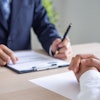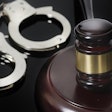
SAN FRANCISCO - What should you do if a patient experiences an acute myocardial infarction while at your office? Do you have an emergency plan? A presentation given at the California Dental Association's CDA Presents 2017 meeting on August 24 provided useful information on how to avoid and be better prepared for handling serious medical events during dental treatment.
Dental anesthesiologist Robert Peskin, DDS, told a large audience that recognizing that your patient is having an issue is just the first step in helping them.
"Recognizing that there's something going on and then being able to deal with that is one of the things that you need to be able to do," he said.
Below are five of Dr. Peskin's recommendations for what dental offices can do to increase their preparedness to handle medical emergencies.
1. Make an emergency kit
 Robert Peskin, DDS, spoke on how to prepare for and avoid emergencies in the dental office.
Robert Peskin, DDS, spoke on how to prepare for and avoid emergencies in the dental office.Every office should have an emergency kit, but each office's kit should be different, tailored to the medical experience and skills of its practitioners, Dr. Peskin said, echoing the advice of the ADA Council on Scientific Affairs.
Useful items for an emergency kit include the following:
- Injectable epinephrine
- Injectable histamine blocker
- Oxygen with positive pressure administration
- Nitroglycerin sublingual tablet or aerosol spray
- Bronchodilator or asthma inhaler
- Something containing concentrated sugar (like cake icing)
- Aspirin
- Benadryl
- Nitroglycerin
2. Emergency preparedness checklist
All office staff should have assigned duties for an emergency, such as making phone calls, that are determined ahead of time Dr. Peskin noted. And in the event that an individual is not in the office, there should be a contingency plan, he explained. Additionally, all staff members should be trained in basic life support.
"To be prepared properly, you need to have some kind of checklist," Dr. Peskin said.
Phone numbers should be placed prominently by each phone for police, ambulance, rescue squad, hospital emergency room, and local physicians.
Daily or weekly reviews should be conducted to ensure that the office contains an oxygen tank and other respiratory support equipment in good working order in the location specified in the emergency plan, he said. Medications in the office also should be checked weekly to ensure necessary replacements have been made and nothing is outdated.
"Someone's got to be in charge of this responsibility," Dr. Peskin said. "That individual is responsible for making sure that this has been done and the form is signed and filed.
He also advised that dental offices practice emergency drills.
3. Obtain a thorough medical history
Taking a thorough medical history for each patient is crucial, Dr. Peskin noted.
"Obtaining a thorough medical history is not simply having a patient fill out a form," he said. "Go through the form and ask patients pointed questions."
“Recognizing that there's something going on and then being able to deal with that is one of the things that you need to be able to do.”
He recommended taking an extra five or 10 minutes to do this.
"That makes you human to the patient," said Dr. Peskin, explaining that patients will become more comfortable with you and then tell you things that don't work on a questionnaire.
Questions should be asked in the same sequential way each time, he recommended. He gave an example of this sequential question asking to show how this process can be helpful:
Dentist: Are you a smoker?
Patient: No.
Dentist: When did you stop smoking?
Patient: Two weeks ago.
"You have to ask the questions that way," he said after some laughter from the audience.
Patients should also be asked about sleep apnea with a question such as "Has your bed partner told you that you snore at night?"
In addition, questions about whether patients take prescription or recreational drugs can help prevent oversedation, he noted.
4. Have a plan for emergencies
According to Dr. Peskin, medical emergencies can include the following types of serious medical issues:
- Noncardiovascular stress-related and nonstress-related emergencies
- Cardiovascular stress-related and nonstress-related emergencies
- Anesthesia-related emergencies, which can be caused by respiratory, cardiovascular, or other issues
Acute myocardial infarction, for example, is a nonstress-related event and sometimes just happens, he said. Anesthesia-related respiratory problems include airway obstruction, laryngospasm, bronchospasm, and hyperventilation.
"A bronchospasm is one of the most devastating things to manage," he said. It can occur secondary to asthma due to allergic reaction or chemical irritation, such as a sulfite sensitivity.
Managing excessive secretion can help to avoid airway obstruction, Dr. Peskin noted. He recommended using a sponge made by Xemax Surgical Products to absorb secretions and act as a barrier.
Hyperventilation is more of an anxiety reaction commonly associated with people who are nervous or tense, he said. Management can include providing oxygen.
Other issues that can occur include hypertension and hypotension.
5. Follow fasting guidelines
Finally, ensuring that patients follow the Society of Anesthesiologists' fasting guidelines can help avoid airway obstructions. This includes telling patients not to consume solids for six hours before procedures.
"I tell patients midnight," Dr. Peskin said for morning procedures.
He also noted that some liquids are considered a solid, such as milk and juice containing pulp.



















